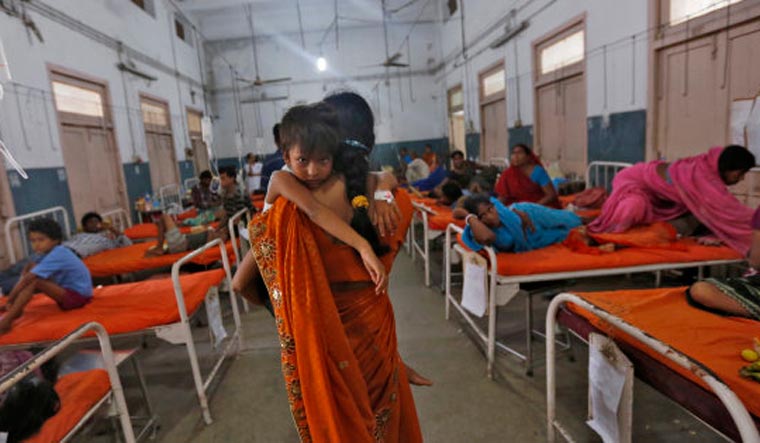In three days, Prime Minister Narendra Modi will launch the world's largest health insurance scheme at a grand event in Ranchi. The scheme, titled Ayushman Bharat-Pradhan Mantri Jan Aarogya Yojana, was rolled out in selected districts on August 15, and is touted to benefit 50 crore families with an annual insurance cover of Rs 5 lakh for secondary and tertiary care.
On Sunday, when the prime minister launches the scheme at Ranchi, it will be rolled out in 450 districts across the country, Indu Bhushan, CEO of Ayushman Bharat, told THE WEEK. “As of now, 31 states (including union territories) are on board. By the end of the month, three more states would join. The scheme is set to be a truly pan-Indian one,” Bhushan said. While Kerala and Punjab have agreed “in-principle”, Delhi, Odisha and Telangana were still “taking some time”, he said.
READ MORE: Ayushman Bharat: Hidden asymmetries and implementation challenges
To ensure quality of the treatment given under the scheme, Bhushan said that the Centre plans to conduct medical audits, and hospitals would also need to adhere to standard treatment protocols for certain conditions. These “treatment protocols” are designed by the Indian Council of Medical Research and the Department of Health Research (DHR), Balram Bhargava, director general of ICMR, confirmed to THE WEEK on the sidelines of a medical technology summit held in the national capital. The Centre has also established a Health Technology Assessment Board, under the DHR, which will decide how much the government should reimburse for each procedure under the scheme.
The success of 'Modicare', however, is hinging on private sector participation, sections of which have been voicing their concerns around package rates set by the Centre. Girdhar Gyani, director general, Association of Private Healthcare Providers, said that since the package rates set up by the government were low—lower than CGHS rates—the Centre's plan would not work for tertiary care procedures such as bypass surgeries, caesarian sections, and other complex procedures. “Right now, the Centre's priority is to launch the scheme. After that they will have to revise the rates,” said Gyani.
Those from the medical technology sector, particularly the multinational companies that manufacture medical devices, too, are concerned about the low rates, and say that they have been working with the government to fix package rates, albeit with a separate price cap for the procedures, and the cost of medical device, keeping in mind “quality” and the cost of “innovation”. “A single price structure will not work, and has the risk of pushing the market to the lowest common denominator. The scheme is complex, and it will take time for the government to sort these issues out," said Probir Das, Senior Vice President, Healthcare Federation of India (NATHEALTH). Das said that, for many procedures, the cost may be optimum, but in others, a rethink was required. "International medical technology companies use their global network to train physicians and develop modern therapies in India. So, they should be considered as a vital pillar for consultation and programme development in [Ayushman Bharat]”, he said.



